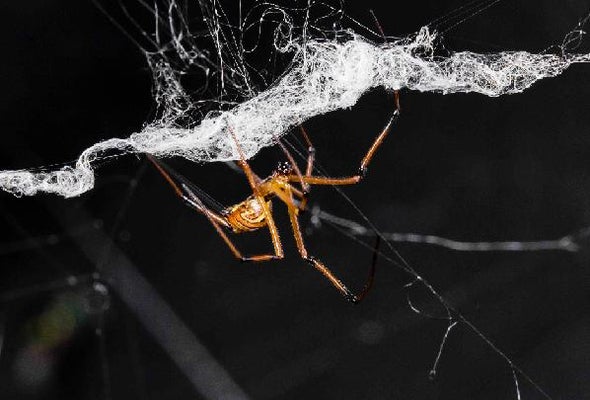This is Scientific American's 60-second Science, I'm Christopher Intagliata.
For male black widow spiders, finding a mate is risky business. "They have to go on an epic journey."
Catherine Scott, an arachnologist at the University of Toronto.
At the population she studies, on Canada's Vancouver Island, she says the spiders have only a 12 percent chance of surviving their scramble over sand dunes and plants. And "they have very poor eyesight, and they're traveling at night."
So one way males find females is by sniffing, from afar, the pheromone perfume on their webs. But Scott has now discovered an alternative way males find mates: by subjecting the spiders to a race.
"For each male, before he started, we weighed him in on a tiny scale, and we painted him with racing stripes and measured the length of his legs. We had a finish line of pheromone-emitting females.... And we released males at various distances from those females to see whether they arrived at a female's web or not and how fast they got there."

What surprised her was that the males that started farthest—nearly 200 feet away—actually traveled fastest toward females. The reason? They poach the paths of their rivals, who spin continuous silk draglines as they move.
"These spiders are much more adept at walking and running on silk than they are on the ground. So we realized maybe the males that we released far away from the females were encountering these silk highways left by rival males and running along them."
The details are in the Proceedings of the Royal Society B.
And follow-up experiments in the lab confirmed that male black widows are indeed willing to risk a run-in with a rival to win a chance to pass on their genes—a chance that makes it worth traveling along the silk road.
Thanks for listening for Scientific American — 60-Second Science. I'm Christopher Intagliata.











